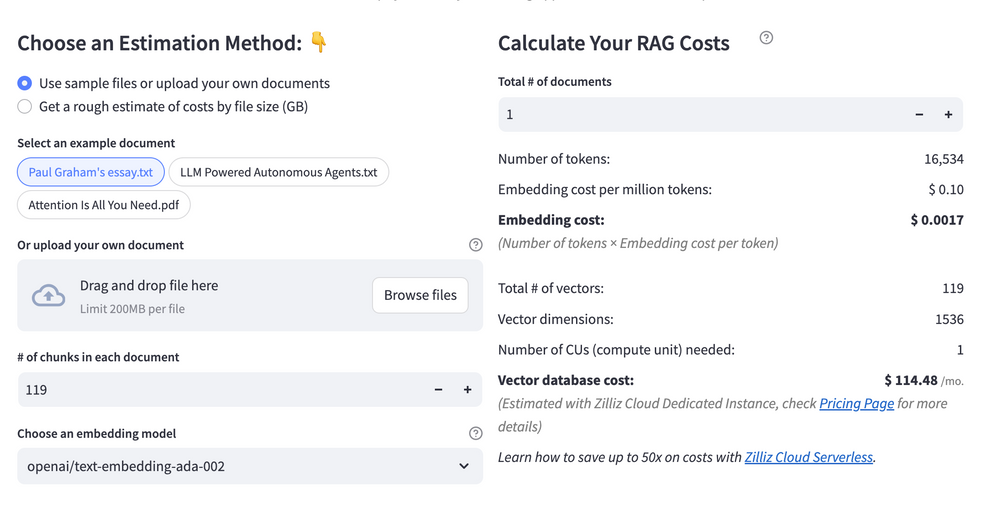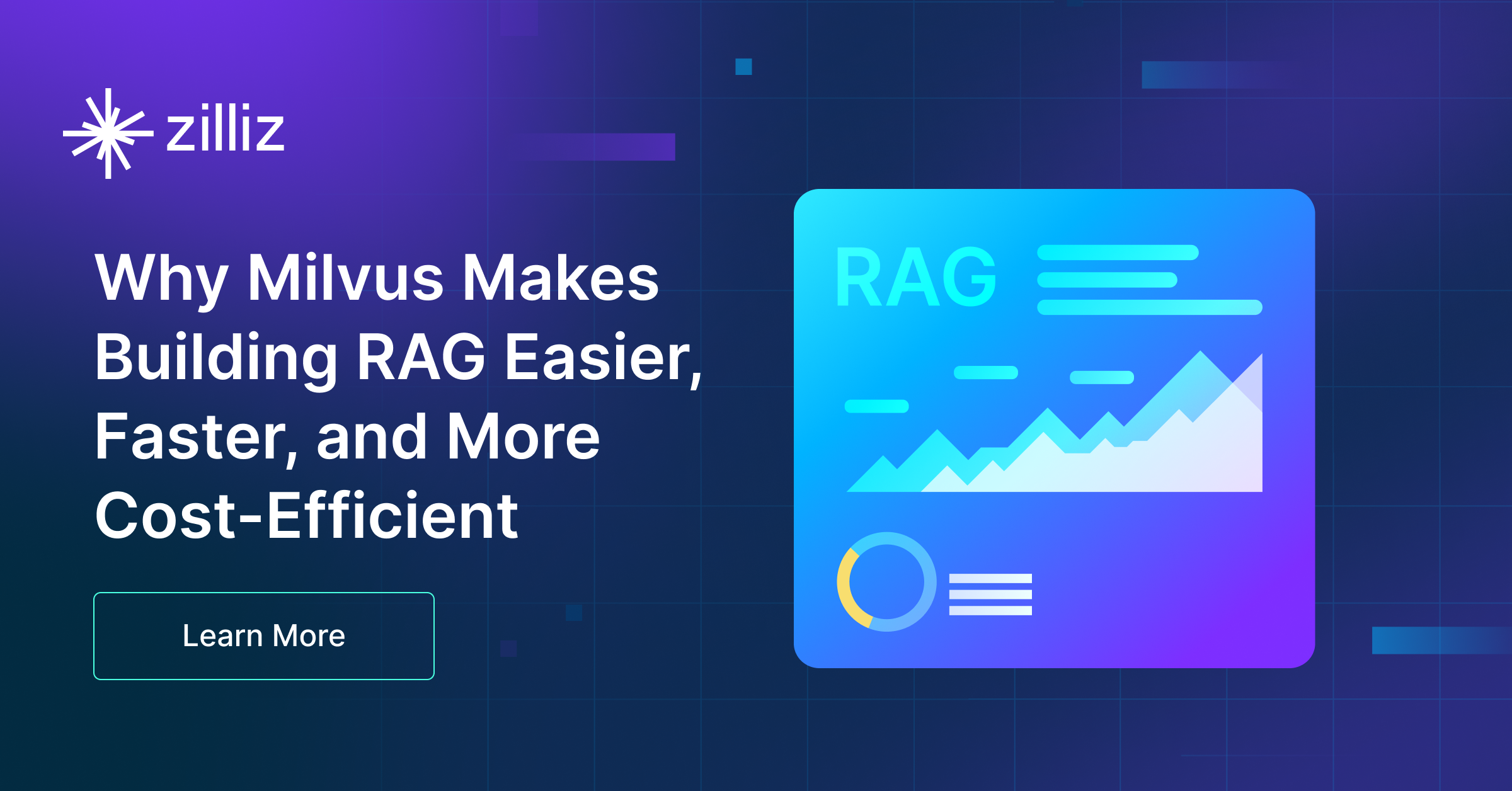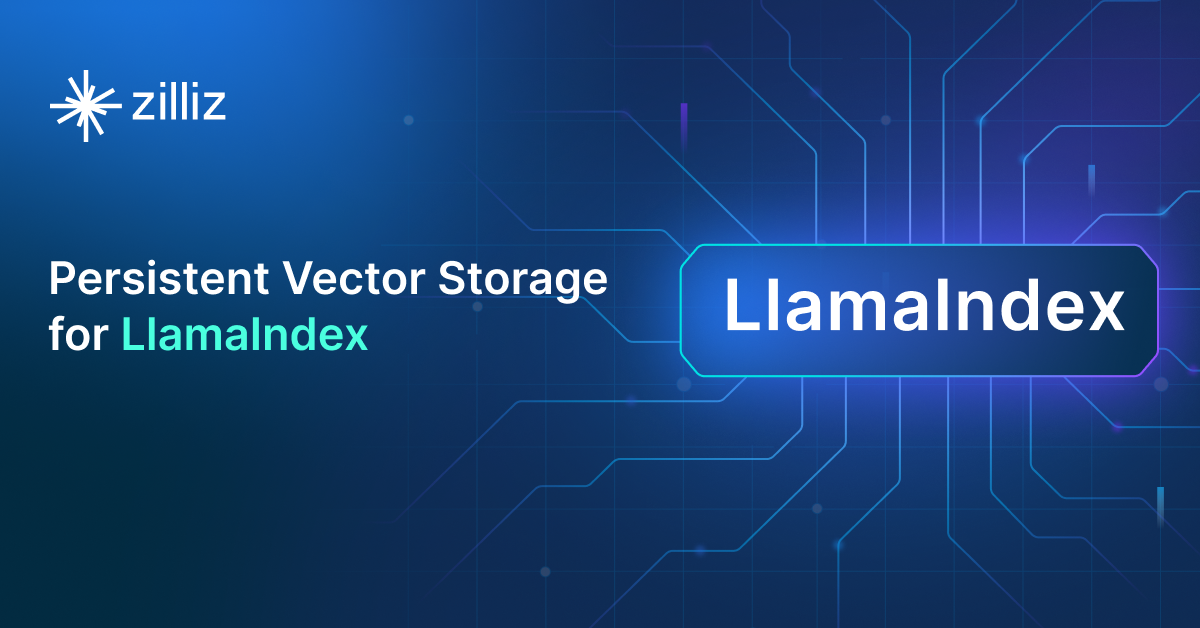Build RAG Chatbot with Haystack, Haystack In-memory store, Anthropic Claude 3 Haiku, and jina-clip-v2
Introduction to RAG
Retrieval-Augmented Generation (RAG) is a game-changer for GenAI applications, especially in conversational AI. It combines the power of pre-trained large language models (LLMs) like OpenAI’s GPT with external knowledge sources stored in vector databases such as Milvus and Zilliz Cloud, allowing for more accurate, contextually relevant, and up-to-date response generation. A RAG pipeline usually consists of four basic components: a vector database, an embedding model, an LLM, and a framework.
Key Components We'll Use for This RAG Chatbot
This tutorial shows you how to build a simple RAG chatbot in Python using the following components:
- Haystack: An open-source Python framework designed for building production-ready NLP applications, particularly question answering and semantic search systems. Haystack excels at retrieving information from large document collections through its modular architecture that combines retrieval and reader components. Ideal for developers creating search applications, chatbots, and knowledge management systems that require efficient document processing and accurate information extraction from unstructured text.
- Haystack in-memory store: a very simple, in-memory document store with no extra services or dependencies. It is great for experimenting with Haystack, and we do not recommend using it for production. If you want a much more scalable solution for your apps or even enterprise projects, we recommend using Zilliz Cloud, which is a fully managed vector database service built on the open-source Milvusand offers a free tier supporting up to 1 million vectors.)
- Anthropic Claude 3 Haiku: A lightweight, high-speed AI model optimized for rapid processing of simple queries and high-volume tasks. Strengths include low latency, cost-efficiency, and multilingual support, ideal for real-time interactions, data extraction, content moderation, and scalable enterprise workflows requiring fast, accurate responses with minimal resource usage.
- Jina-CLIP-V2: A multimodal AI model designed to seamlessly connect text and visual data, excelling in cross-modal retrieval tasks. Strengths include high accuracy in image-text matching, multilingual support, and scalable architecture. Ideal for semantic image search, content moderation, and personalized recommendations in e-commerce or media platforms.
By the end of this tutorial, you’ll have a functional chatbot capable of answering questions based on a custom knowledge base.
Note: Since we may use proprietary models in our tutorials, make sure you have the required API key beforehand.
Step 1: Install and Set Up Haystack
import os
import requests
from haystack import Pipeline
from haystack.components.converters import MarkdownToDocument
from haystack.components.preprocessors import DocumentSplitter
from haystack.components.writers import DocumentWriter
Step 2: Install and Set Up Anthropic Claude 3 Haiku
To use Anthropic models, you need an Anthropic API key. You can provide this key in one of the following ways:
- The recommended approach is to set it as the
ANTHROPIC_API_KEYenvironment variable. - Alternatively, you can pass it directly when initializing the component using Haystack’s Secret API:
Secret.from_token("your-api-key-here").
When configuring Anthropic models, make sure to define the Anthropic model you want to use by specifying it in the model parameter.
This component generates text based on a given prompt. Additionally, you can customize the generation process by providing extra parameters available in the Anthropic Messaging API. These parameters can be passed using generation_kwargs, either during initialization or when calling the run() method. To explore all available options, refer to the Anthropic documentation.
Finally, the run() method requires a single string as input to generate text.
Now let's install the anthropic-haystack package to use the AnthropicGenerator:
pip install anthropic-haystack
from haystack_integrations.components.generators.anthropic import AnthropicGenerator
generator = AnthropicGenerator(model="claude-3-haiku-20240307")
Step 3: Install and Set Up jina-clip-v2
pip install jina-haystack
from haystack_integrations.components.embedders.jina import JinaTextEmbedder
from haystack_integrations.components.embedders.jina import JinaDocumentEmbedder
text_embedder = JinaTextEmbedder(api_key=Secret.from_token("<your-api-key>"), model="jina-clip-v2")
document_embedder = JinaDocumentEmbedder(api_key=Secret.from_token("<your-api-key>"), model="jina-clip-v2")
Step 4: Install and Set Up Haystack In-memory store
from haystack.document_stores.in_memory import InMemoryDocumentStore
from haystack.components.retrievers import InMemoryEmbeddingRetriever
document_store = InMemoryDocumentStore()
retriever=InMemoryEmbeddingRetriever(document_store=document_store))
Step 5: Build a RAG Chatbot
Now that you’ve set up all components, let’s start to build a simple chatbot. We’ll use the Milvus introduction doc as a private knowledge base. You can replace it your own dataset to customize your RAG chatbot.
url = 'https://raw.githubusercontent.com/milvus-io/milvus-docs/refs/heads/v2.5.x/site/en/about/overview.md'
example_file = 'example_file.md'
response = requests.get(url)
with open(example_file, 'wb') as f:
f.write(response.content)
file_paths = [example_file] # You can replace it with your own file paths.
indexing_pipeline = Pipeline()
indexing_pipeline.add_component("converter", MarkdownToDocument())
indexing_pipeline.add_component("splitter", DocumentSplitter(split_by="sentence", split_length=2))
indexing_pipeline.add_component("embedder", document_embedder)
indexing_pipeline.add_component("writer", DocumentWriter(document_store))
indexing_pipeline.connect("converter", "splitter")
indexing_pipeline.connect("splitter", "embedder")
indexing_pipeline.connect("embedder", "writer")
indexing_pipeline.run({"converter": {"sources": file_paths}})
# print("Number of documents:", document_store.count_documents())
question = "What is Milvus?" # You can replace it with your own question.
retrieval_pipeline = Pipeline()
retrieval_pipeline.add_component("embedder", text_embedder)
retrieval_pipeline.add_component("retriever", retriever)
retrieval_pipeline.connect("embedder", "retriever")
retrieval_results = retrieval_pipeline.run({"embedder": {"text": question}})
# for doc in retrieval_results["retriever"]["documents"]:
# print(doc.content)
# print("-" * 10)
from haystack.utils import Secret
from haystack.components.builders import PromptBuilder
retriever=InMemoryEmbeddingRetriever(document_store=document_store)
text_embedder = JinaTextEmbedder(api_key=Secret.from_token("<your-api-key>"), model="jina-clip-v2")
prompt_template = """Answer the following query based on the provided context. If the context does
not include an answer, reply with 'I don't know'.\n
Query: {{query}}
Documents:
{% for doc in documents %}
{{ doc.content }}
{% endfor %}
Answer:
"""
rag_pipeline = Pipeline()
rag_pipeline.add_component("text_embedder", text_embedder)
rag_pipeline.add_component("retriever", retriever)
rag_pipeline.add_component("prompt_builder", PromptBuilder(template=prompt_template))
rag_pipeline.add_component("generator", generator)
rag_pipeline.connect("text_embedder.embedding", "retriever.query_embedding")
rag_pipeline.connect("retriever.documents", "prompt_builder.documents")
rag_pipeline.connect("prompt_builder", "generator")
results = rag_pipeline.run({"text_embedder": {"text": question}, "prompt_builder": {"query": question},})
print('RAG answer:\n', results["generator"]["replies"][0])
Optimization Tips
As you build your RAG system, optimization is key to ensuring peak performance and efficiency. While setting up the components is an essential first step, fine-tuning each one will help you create a solution that works even better and scales seamlessly. In this section, we’ll share some practical tips for optimizing all these components, giving you the edge to build smarter, faster, and more responsive RAG applications.
Haystack optimization tips
To optimize Haystack in a RAG setup, ensure you use an efficient retriever like FAISS or Milvus for scalable and fast similarity searches. Fine-tune your document store settings, such as indexing strategies and storage backends, to balance speed and accuracy. Use batch processing for embedding generation to reduce latency and optimize API calls. Leverage Haystack's pipeline caching to avoid redundant computations, especially for frequently queried documents. Tune your reader model by selecting a lightweight yet accurate transformer-based model like DistilBERT to speed up response times. Implement query rewriting or filtering techniques to enhance retrieval quality, ensuring the most relevant documents are retrieved for generation. Finally, monitor system performance with Haystack’s built-in evaluation tools to iteratively refine your setup based on real-world query performance.
Haystack in-memory store optimization tips
Haystack in-memory store is just a very simple, in-memory document store with no extra services or dependencies. We recommend that you just experiment it with RAG pipeline within your Haystack framework, and we do not recommend using it for production. If you want a much more scalable solution for your apps or even enterprise projects, we recommend using Zilliz Cloud, which is a fully managed vector database service built on the open-source Milvusand offers a free tier supporting up to 1 million vectors
Anthropic Claude 3 Haiku optimization tips
To optimize Claude 3 Haiku in RAG systems, prioritize semantic search quality by combining keyword and vector-based retrieval with tuned chunk sizes (256-512 tokens) and overlap for context preservation. Structure retrieved content using XML tags or section headers for clearer parsing, and enforce strict context grounding via system prompts like "Base responses solely on provided documents." Limit output length to 300-500 tokens for cost efficiency, implement response validation against source materials to reduce hallucinations, and cache frequent queries. Use rate limiting to manage throughput and parallelize processing for high-volume workflows while monitoring accuracy metrics.
Jina-CLIP-v2 optimization tips
To optimize Jina-CLIP-v2 in a RAG setup, preprocess inputs by cleaning text, normalizing formats, and truncating overly long documents to reduce noise. Use batch inference for embeddings to leverage GPU parallelism, and ensure model weights are quantized or pruned for faster inference. Cache frequently accessed embeddings to avoid redundant computations. Fine-tune the model on domain-specific data to improve retrieval relevance. Pair with efficient vector indexes (e.g., FAISS) for low-latency similarity searches, and monitor embedding quality via recall metrics to balance speed and accuracy. Regularly update the index with fresh data.
By implementing these tips across your components, you'll be able to enhance the performance and functionality of your RAG system, ensuring it’s optimized for both speed and accuracy. Keep testing, iterating, and refining your setup to stay ahead in the ever-evolving world of AI development.
RAG Cost Calculator: A Free Tool to Calculate Your Cost in Seconds
Estimating the cost of a Retrieval-Augmented Generation (RAG) pipeline involves analyzing expenses across vector storage, compute resources, and API usage. Key cost drivers include vector database queries, embedding generation, and LLM inference.
RAG Cost Calculator is a free tool that quickly estimates the cost of building a RAG pipeline, including chunking, embedding, vector storage/search, and LLM generation. It also helps you identify cost-saving opportunities and achieve up to 10x cost reduction on vector databases with the serverless option.
 Calculate your RAG cost
Calculate your RAG cost
What Have You Learned?
By diving into this tutorial, you’ve just unlocked the power to build a fully functional RAG system from the ground up! You learned how Haystack acts as the backbone, seamlessly connecting every component of your pipeline—like a master conductor orchestrating a symphony of AI tools. The Haystack In-memory store became your lightning-fast memory bank, handling vector searches in real time, while jina-clip-v2 transformed your raw data into rich embeddings, giving your system the ability to understand context and relationships. And let’s not forget Claude 3 Haiku, the LLM maestro that synthesized retrieved information into coherent, human-like responses, proving that speed and quality can coexist. Along the way, you discovered how to optimize each step, from tweaking chunk sizes to balancing accuracy with computational cost, and even got hands-on with a free RAG cost calculator to keep your projects budget-friendly. This isn’t just theory—it’s a toolkit for turning ideas into intelligent applications that learn and adapt.
Imagine the possibilities now that you’ve seen how these pieces fit together: RAG systems that answer complex questions, summarize research, or personalize user interactions—all while staying efficient and scalable. You’ve seen how flexible this setup is, whether you’re working with text, images, or hybrid data. The tutorial gave you the blueprint, but your creativity is the secret sauce. Maybe you’ll fine-tune embeddings for niche domains, experiment with hybrid retrieval strategies, or build a chatbot that feels eerily human. Remember, every optimization tweak or clever prompt you craft could be the spark that sets your project apart. So what are you waiting for? Grab your code editor, fire up Haystack, and start building! The future of AI is collaborative, dynamic, and waiting for you to shape it. Let’s make those RAG dreams a reality—one query at a time. 🚀
Further Resources
🌟 In addition to this RAG tutorial, unleash your full potential with these incredible resources to level up your RAG skills.
- How to Build a Multimodal RAG | Documentation
- How to Enhance the Performance of Your RAG Pipeline
- Graph RAG with Milvus | Documentation
- How to Evaluate RAG Applications - Zilliz Learn
- Generative AI Resource Hub | Zilliz
We'd Love to Hear What You Think!
We’d love to hear your thoughts! 🌟 Leave your questions or comments below or join our vibrant Milvus Discord community to share your experiences, ask questions, or connect with thousands of AI enthusiasts. Your journey matters to us!
If you like this tutorial, show your support by giving our Milvus GitHub repo a star ⭐—it means the world to us and inspires us to keep creating! 💖
- Introduction to RAG
- Key Components We'll Use for This RAG Chatbot
- Step 1: Install and Set Up Haystack
- Step 2: Install and Set Up Anthropic Claude 3 Haiku
- Step 3: Install and Set Up jina-clip-v2
- Step 4: Install and Set Up Haystack In-memory store
- Step 5: Build a RAG Chatbot
- Optimization Tips
- RAG Cost Calculator: A Free Tool to Calculate Your Cost in Seconds
- What Have You Learned?
- Further Resources
- We'd Love to Hear What You Think!
Content
Vector Database at Scale
Zilliz Cloud is a fully-managed vector database built for scale, perfect for your RAG apps.
Try Zilliz Cloud for Free


